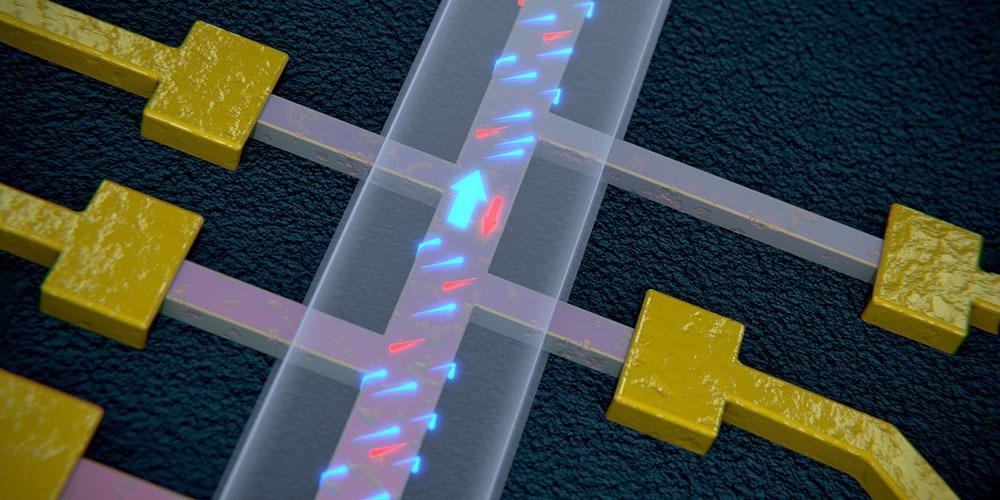Highly stable qubits, the basic building block of future quantum computers, might be enabled via very thin wires made of a topological insulator. A recent achievement in topological insulator devices is seen by scientists as a significant step toward achieving the technology’s potential.
 Applying a magnetic field causes current to flow more easily in one direction along the nanowire than in the opposite one. Image Credit: University of Basel, Department of Physics.
Applying a magnetic field causes current to flow more easily in one direction along the nanowire than in the opposite one. Image Credit: University of Basel, Department of Physics.
When formed of a unique substance known as a topological insulator, wires 100 times thinner than a human hair can operate as a quantum one-way street for electrons, according to an international group of researchers.
The breakthrough paves the way for new technical uses of topological insulator devices and marks a key step toward the development of so-called topological qubits, which are believed to be able to reliably encode information for quantum computers.
Professor Dr. Jelena Klinovaja and Professor Dr. Daniel Loss of the University of Basel worked together with Professor Dr. Yoichi Ando’s experimental physicists at the University of Cologne to reach this finding. Their research was just published in the journal Nature Nanotechnology.
Insulator on the Inside, Conductor on the Outside
Topological insulators are materials with conducting surfaces and insulating interiors created by combining quantum mechanics with the mathematical idea of topology. Topological insulators are extremely attractive prospects for future technologies and quantum computing platforms.
Under the correct conditions, the scientists were able to demonstrate that electric currents may flow more freely in one way than the other, a phenomenon known as rectification. Rectification has many uses and is the foundation for most wireless technology.
Semiconductor diodes, for example, are now used in smartphone rectifiers. The current rectification effect found in topological insulator nanowires, on the other hand, is caused by quantum mechanics and is very controlled.
Quantum rectification effects are usually caused by spin-orbit coupling, which is a combination of quantum mechanics and Einstein’s theory of relativity. As one may expect, such an unusual combination tends to produce minor rectification effects.
What’s great about the topological insulator nanowires is that we can artificially produce essentially the same physics but with a much larger magnitude. This leads to a rectification effect that’s really huge compared to other materials. It’s also one of the aspects that makes topological insulators so exciting for applications in quantum computing.
Dr. Henry Legg, Study First Author and Georg H. Endress Postdoctoral Fellow, University of Basel
Robust Quantum Information
Quantum computers offer immense computing power, but they are subject to environmental influences. Topological qubits, which are projected to be significantly more robust against the impacts of the external environment, are one suggested solution to the fragility of quantum units of information — so-called qubits. The mathematics of topology, which underlies the features of topological insulators, also provides this protection.
Topological insulators have long been thought to be promising candidates for topological quantum computers. To manufacture topological qubits, however, strong control over topological insulator devices is required.
Our study not only discovered a unique and very large quantum effect, but it also shows that we have an excellent degree of understanding what is happening in these systems. It seems like all the key properties of topological insulators are there to move forward on the path to making topological qubits.
Dr. Jelena Klinovaja, Professor, University of Basel
Journal Reference:
Legg, H. F., et al. (2022) Giant magnetochiral anisotropy from quantum-confined surface states of topological insulator nanowires. Nature Nanotechnology. doi.org/10.1038/s41565-022-01124-1.